Year 3, Lesson 3.1: Exploring Modes of Changemaking
Unit Learning Goal
Students will reflect on how individuals and organizations express values through work, activism, and mission, and explore how role models, responsibility, and dilemmas influence their own path toward meaningful contribution and good citizenship.
Lesson Goal
Students will be able to identify and explain four different modes of changemaking and recognize how their personal values and sense of responsibility connect to different approaches to creating change.
Assessment
Monitor participation in discussion activities and small groups for understanding of the four changemaking modes.
Analyze Exit Ticket responses for understanding of connections between students’ values/responsibilities and different changemaking approaches.
CASEL Alignment
Self-Awareness, Responsible Decision-Making, Relationship Skills
Portfolio Documentation
Resources
"What Does It Mean to Make a Difference? Considering Four Frameworks" Blog Post & Social Impact Frameworks Quiz
Mentimeter, Poll Everywhere, Slido, or another interactive polling tool (optional)
Projector or ability to share slides/blog post
Prerequisites
Students should be familiar with the Good Project concepts of values and responsibility.
Total Time
45 minutes
Instructions
-
Briefly remind students of past discussions on responsibility and values from earlier Good Project lessons. Prompt them to consider: "How do our values shape what we feel responsible for? How might different people, with different values, approach ‘making a difference’ or ‘having an impact’ in different ways?"
1. Opener: What Does It Mean to Make a Difference? [5 minutes]
Ask students: "When you hear the phrase 'making a difference,' what comes to mind?"
OPTIONAL: Use a tool like Mentimeter, Poll Everywhere, or Slido to create a word cloud from students' one-word or short-phrase responses.
Quickly discuss the results: What themes are emerging? What surprises students?
2. Introduction: The Four Buckets of Changemaking [10 minutes]
Introduce the 4 Buckets Framework, using the changemaking buckets slides if desired:
Ripples Into Reform (small actions, awareness raising)
Change Through Charity (giving time, money, or resources)
Rooting for a Reset (tackling systems, policies, root causes)
Crafting a New Culture (creating new ideas, businesses)
Emphasize to students:
No one type is "better" — all are valuable depending on goals, context, and values.
Each mode has strengths and challenges.
These are not the only four ways to make change. There are other methods; these are just four prevalent themes from The Good Project’s research.
Tie back briefly to Good Project concepts:
Responsibility: Different changemaking approaches come with different responsibilities.
Values: Our personal values may influence which type(s) of changemaking we feel drawn to.
3. Quiz Activity: Which Type of Changemaker Are You? [15 minutes]
Have students individually take the 4 Buckets Quiz (it’s also linked in the blog post).
Emphasize to students that the quiz is made up of forced choices where students have to choose between two options and will be identified with one changemaking bucket, even though students may feel connected to more than one mode. This is to help them think more about their values and responsibilities, not to make them think that they would have to make this choice in real life.
After completing the quiz:
OPTIONAL: Create a quick poll (Mentimeter, Poll Everywhere, Slido) where students anonymously select the bucket they landed in.
Display and discuss poll results: Which types are most common? Which are least common? Why might that be?
In small groups or pairs, students discuss:
Was it hard to choose an answer on the quiz?
Did they feel connected to one or more types of changemaking?
What stood out to them about their result?
-
When leading the whole-class discussion on changemaking types, be aware that some students may reference personal or family experiences that involve protest, political activism, or systemic harm. Some students may feel uncertain or vulnerable dependent upon the local political climate or social context.
Consider establishing norms around civil discourse and emotional safety. Emphasize that students may participate in changemaking in many ways, including quiet leadership, art, service, innovation, or reform—and that all contributions are valued.
Refer to the linked resources for optional tools and strategies to guide discussion in sensitive or politically diverse classrooms.
Facing History & Ourselves – Teaching about Controversial Issues in Polarized Times
Learning for Justice – Let’s Talk! Facilitating Critical Conversations With Students
Edutopia – Taking the Heat Out of Politically Charged Classroom Discussions
Harvard Graduate School of Education – Making Space for Difficult Discussions
Also check out The Good Project blogs centered on discussion and civil discourse:
4. Whole-Class Discussion: Strengths and Challenges of Changemaking Types [10 minutes]
As a full class, discuss:
What are some strengths of each changemaking approach?
What are potential challenges or drawbacks?
Can students think of a situation where one type might be better suited than another?
Possible guiding questions:
When might small "ripples" be more powerful than large reforms?
When might building something new be better than fixing an old system?
How might different changemaking types complement each other?
5. Closing and Exit Ticket: Reflecting on Changemaking Paths [5 minutes]
“After learning about the four modes of changemaking, choose one other changemaking style (besides the one you got on the quiz) that you would like to explore further. Explain why you are interested in it. (This could be one of the other three changemaking styles we learned about, or one that you have created yourself.)”
Collect the Exit Tickets for assessment and portfolio documentation.
-
Dilemmas Connection: Pick a dilemma from the Good Project Dilemmas Database and ask students: Which changemaking mode would be most effective for addressing the problem in this dilemma? Why?
News Article Connection: Assign a short current news article (or have students pick their own) and ask: Which type of changemaker do you see at work in this news story?
Personal Values Map: Students create a mini-mind map linking their values to possible changemaking approaches they'd like to try.

